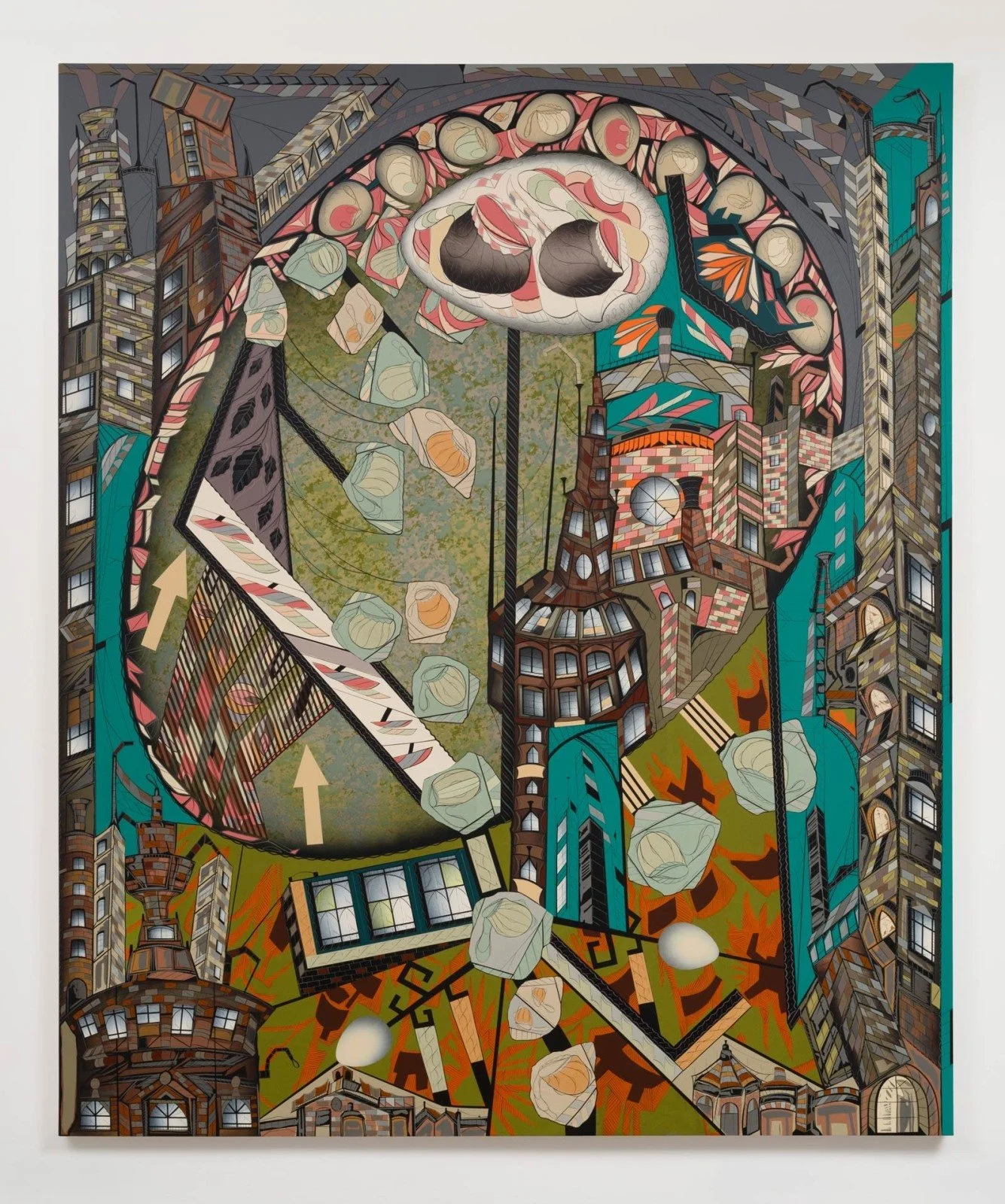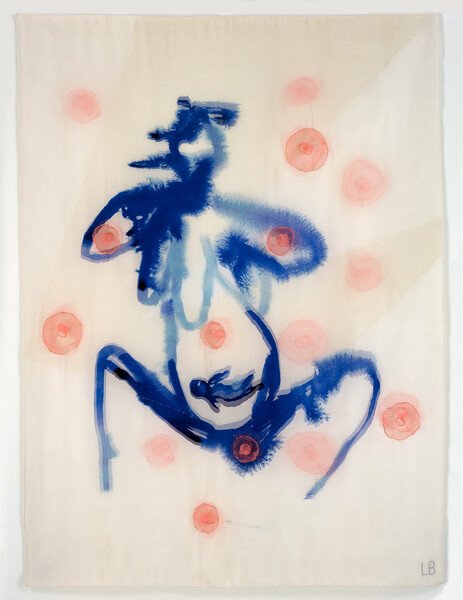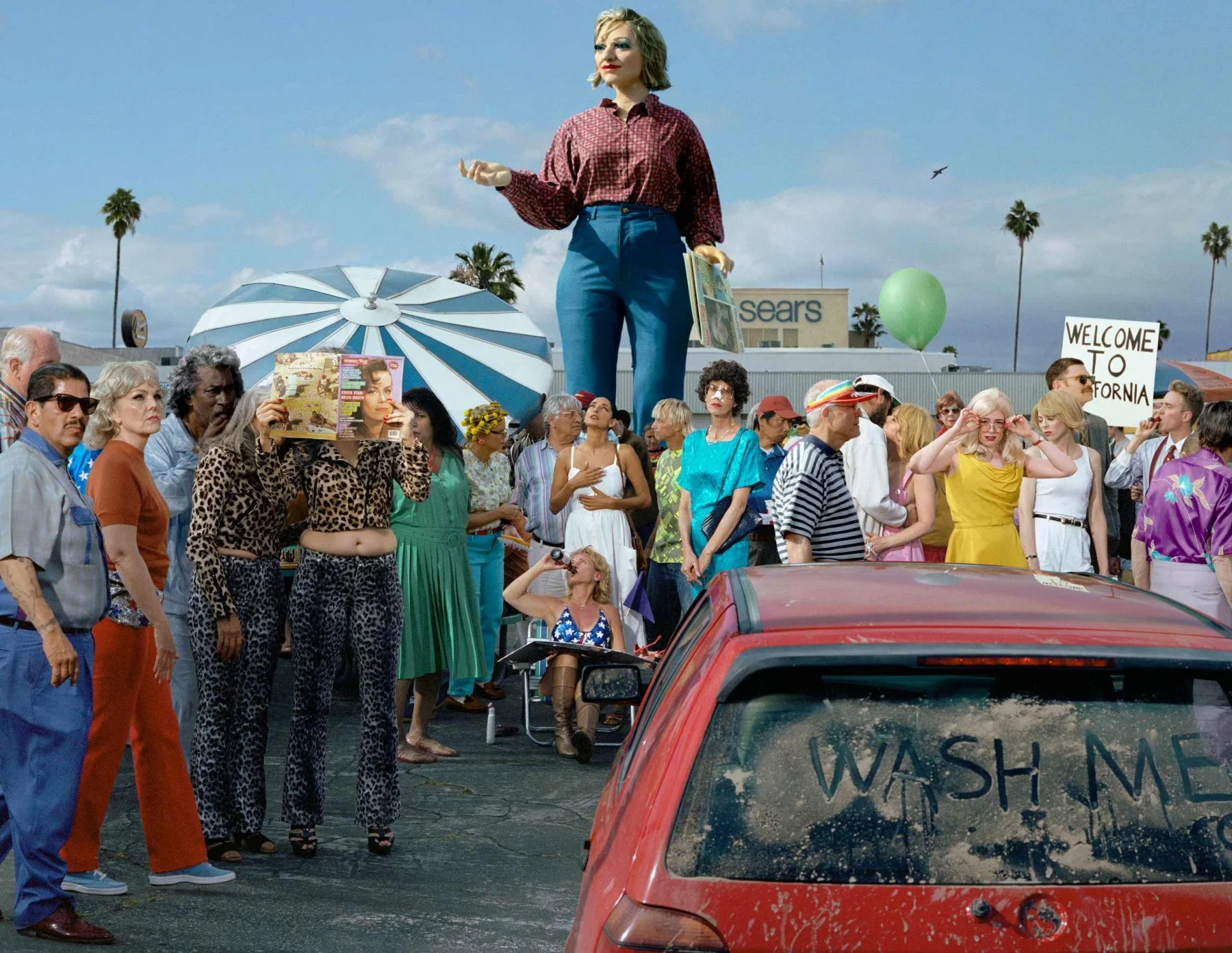Lari Pittman
“Sparkling Cities With Egg Monuments”
New York, 501 West 24th Street
A longtime resident of Los Angeles (he spent his early childhood in Colombia), Pittman’s longstanding interest in the dynamics and decorative possibilities of the urban fabric developed in dialogue with one of America’s most surreal metropolises. Los Angeles’ astounding heterogeneity affirmed a set of ethics that has guided Pittman’s exploration of themes such as the AIDS epidemic, racial discord, LGBTQ+ civil rights struggles, and gun violence that continue to define life in America. Nowhere are such issues as intensely incubated and explosively scaled as they are in cities. During the 1990s, Pittman’s work investigated the densely patterned and productively disruptive logic of such social-political currents, using his signature painting technique to build up refracted surfaces that draw on an array of stylistic and iconographic references. Among these, Pittman has repeatedly invoked the egg as a metaphor for regeneration.
LARI PITTMAN Sparkling City With Egg Monuments, 2022 (detail) Acrylic and spray paint over gessoed canvas over wood panel 5 panels, each: 96 x 80 inches 243.8 x 203.2 cm Overall: 96 x 400 inches 243.8 x 1016 cm © Lari Pittman Photo by Evan Bedford
The egg’s rich history of appearances in Pittman’s oeuvre dates back to the early 1980s. Whether pictured as gestating embryos or miniature portrait cameos that might grace a locket, Pittman’s eggs have often served as vessels for both future potentiality and nostalgic remembrance. Monuments operate on a parallel, albeit typically foreclosed, register. By memorializing certain histories in public memory, they strive to inculcate a set of shared values that will steer the interpretation of future events. Conversely, the egg-as-monument is a radically open proposition. In Sparkling Cities With Egg Monuments, Pittman deploys eggs as a feminine foil to the peacocking masculinity apparent in the upward thrust of obelisks and towers. Unlike historical monuments that look towards the past, Pittman’s egg monuments—displayed dotted across vast cityscapes or presented in microscopic cross-section—are fertile, nascent, and becoming.
Each of Pittman’s paintings depict eggs in various stages of gestation, performance, exteriorization, and monumentalization. Sparkling City With Egg Monuments #5 and Sparkling City With Egg Monuments #8 enact meticulously rendered yet mysterious operations in their ovular arenas. Mollusks tumble down chutes, small eggs pearl inside larger eggs, and tendrils of vegetation bloom alongside pumping machinery. Other eggs, such as those in Sparkling City With Egg Monuments #3, Sparkling City With Egg Monuments #4, and Sparkling City With Egg Monuments #9 assume their roles as monuments. These monumental eggs become an edifice for the display of the words “please” or “thank you.” Written in the lost art of looping cursive, these simple words recall protocols of polite exchange. They pop up fully formed, seemingly the result of innumerable and tirelessly negotiated encounters spatialized in Pittman’s paintings—the credo of a machinery attempting to engineer a civilization, one gracious gesture at a time.
The relationship of egg to city is in constant flux. Each painting features a vertiginous urban infrastructure disrupted by the curvilinear forms of swelling eggs. Eggs and buildings interpenetrate one another both graphically and chromatically. In some cases, eggs swallow the city whole, as in #9, where a massive egg filled with turrets and bridges nestles in the raspberry walls of a suggestively uterine cavity. The egg in #4 also appears to be incubating an entire citadel, a rosy dawn breaking over the silhouette of a newly formed skyline.







